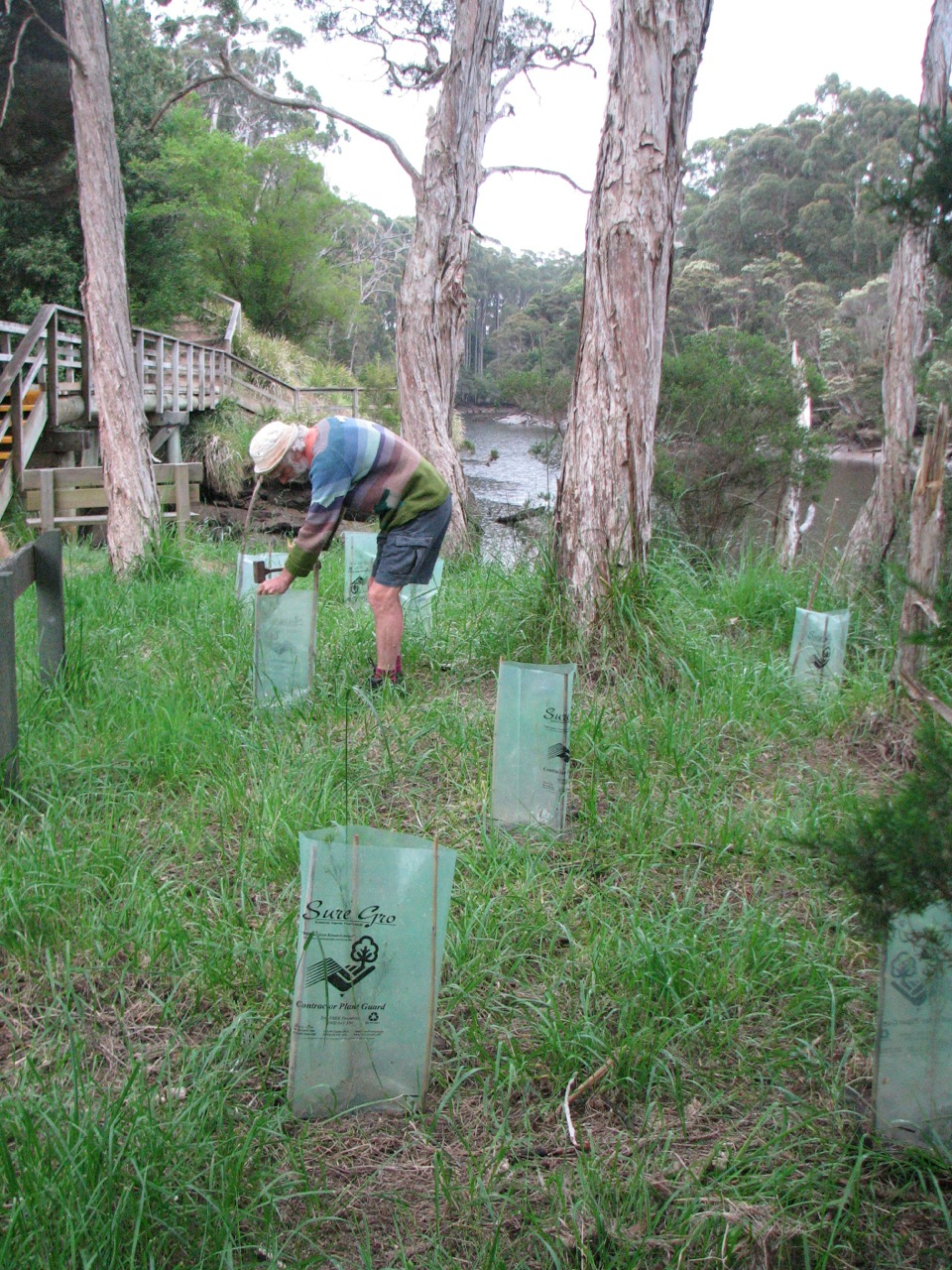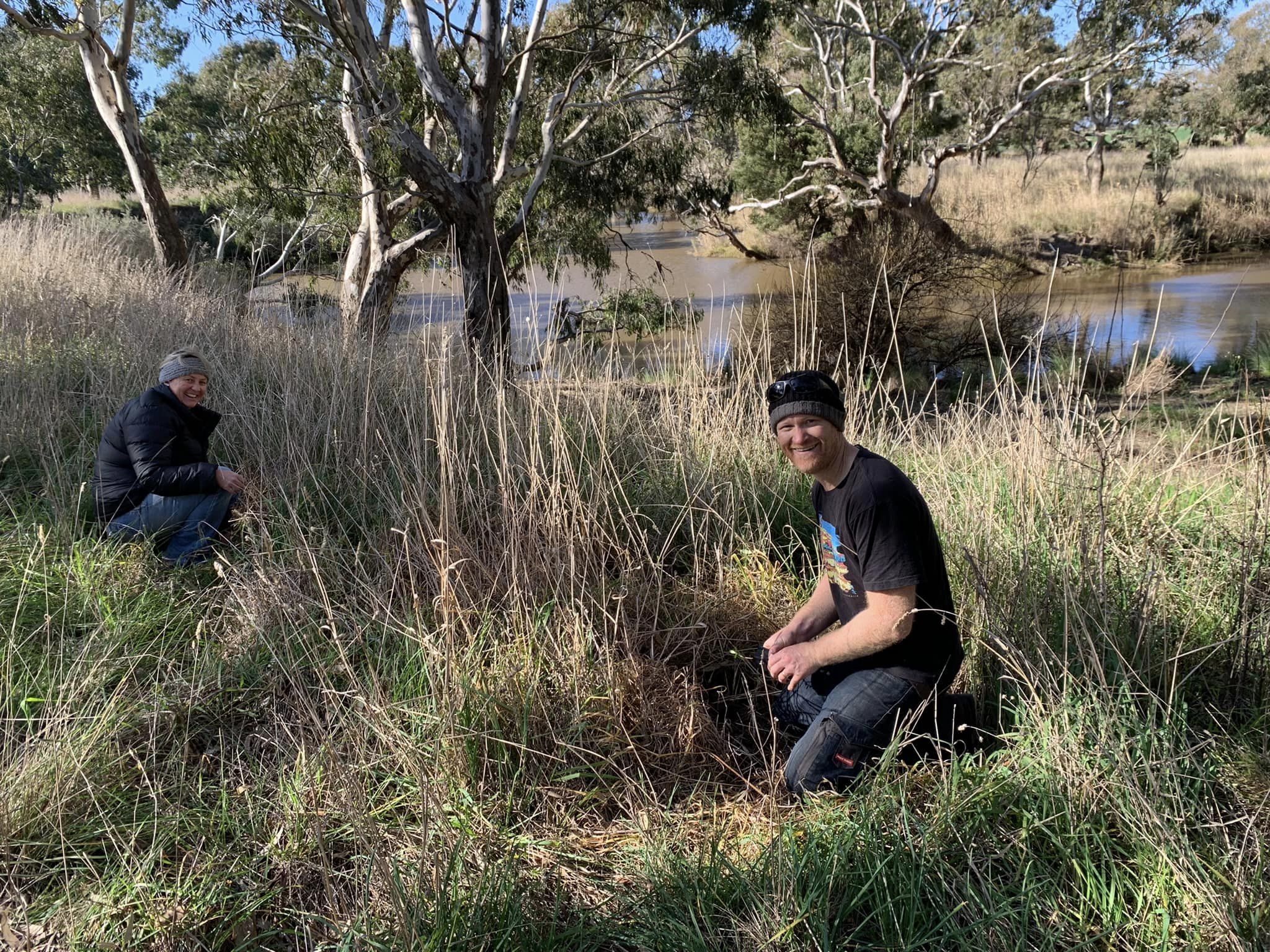Trees and waterways are both critical for ecosystems, and we are always delighted when we hear of a planting project that involves planting along a creek or river. Trees and waterways work to benefit each other in so many ways. A symbiotic relationship worth celebrating.
If trees are the lungs of the earth, it could be said that rivers are the arteries. Both are vital for ecosystems and planetary health.
National Tree Day / Planet Ark
Here’s 6 ways trees can contribute to the health of our creeks, streams and rivers.
1. Native trees can provide homes and habitat for river dwelling animals. Insects, amphibians, fish, birds and mammals all use trees for shelter and homes.
2. Native trees provide shade. Climate change is already affecting our rivers and rising water temperature can impact on a fish’s ability to breed, and even breathe. By shading rivers, trees help to keep the water cool and therefore oxygen rich (cooler water is able to absorb great amounts of oxygen).
3. Native trees help prevent erosion. Tree roots form a protective barrier around rivers which helps reduce the amount of soil that can enter the water. Tree roots also combine soil together to help reduce soil bank erosion. Keeping sediments (tiny particles of soil) out of the water helps keep the water clean for animals to find their prey, and for plants to photosynthesis.
4. Native trees protect watersheds. A watershed is an area of land that drains rain water into one location such as a river. These ecosystems can supply drinking water for surrounding communities. Trees provide a range of water-related ecosystem services, including filtering excess sediment, nutrients, and toxins before they enter waterways, reducing erosion and flooding, and shading streams so they are at optimal temperatures for aquatic wildlife.
5. Native trees can provide a nature flood defence. After periods of heavy rainfall or flash flooding, trees will absorb a significant amount of stormwater via their roots, this in turn reduces floodwater damage to the river ecosystems and infrastructure. Over time, the storm water is slowly released back into the earth and atmosphere via transpiration. Underground root systems break up the soil so more water can be absorbed into the ground, instead of running off into the river and perhaps causing erosion of the river banks.
6. The cycle of life. Fallen trees may look untidy to some but for fish, invertebrates and a variety of other animals, it is home. Logs and branches are essential components of all healthy waterways. In the water, snags act as safety houses for indigenous fish to establish nurseries for their young. Above the water, branches become roosts for birds. Branches also provide shelter for lizards and safe place for turtles to sun themselves. Fungi growing on dead wood help complete the recycling process. So, even a dead tree enriches life of a river.

Writer: Colleen B. Filippa
With a background in Environmental Science, Colleen is the Founding Director of Fifteen Trees. In 2009, after 20 years in primary, secondary and tertiary education institutions, Colleen left the classroom to start the company. Fifteen Trees is a social enterprise assisting individuals and companies to reduce their carbon footprint by supporting community groups such as Landcare, schools and environmental networks.


